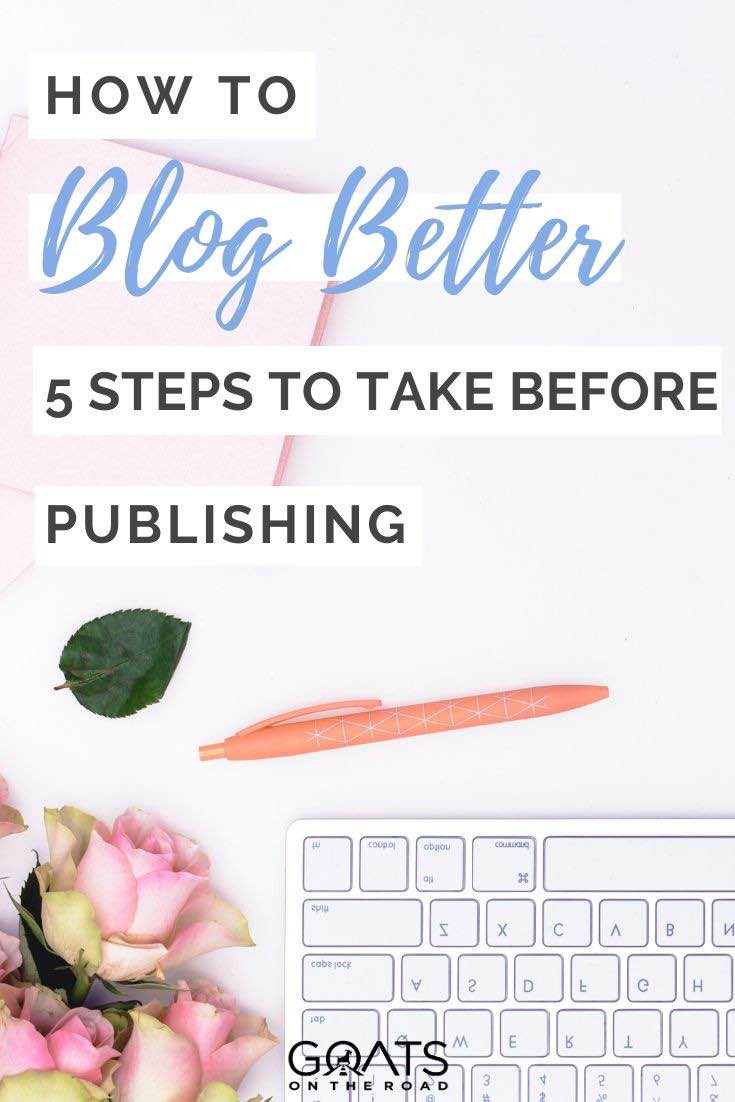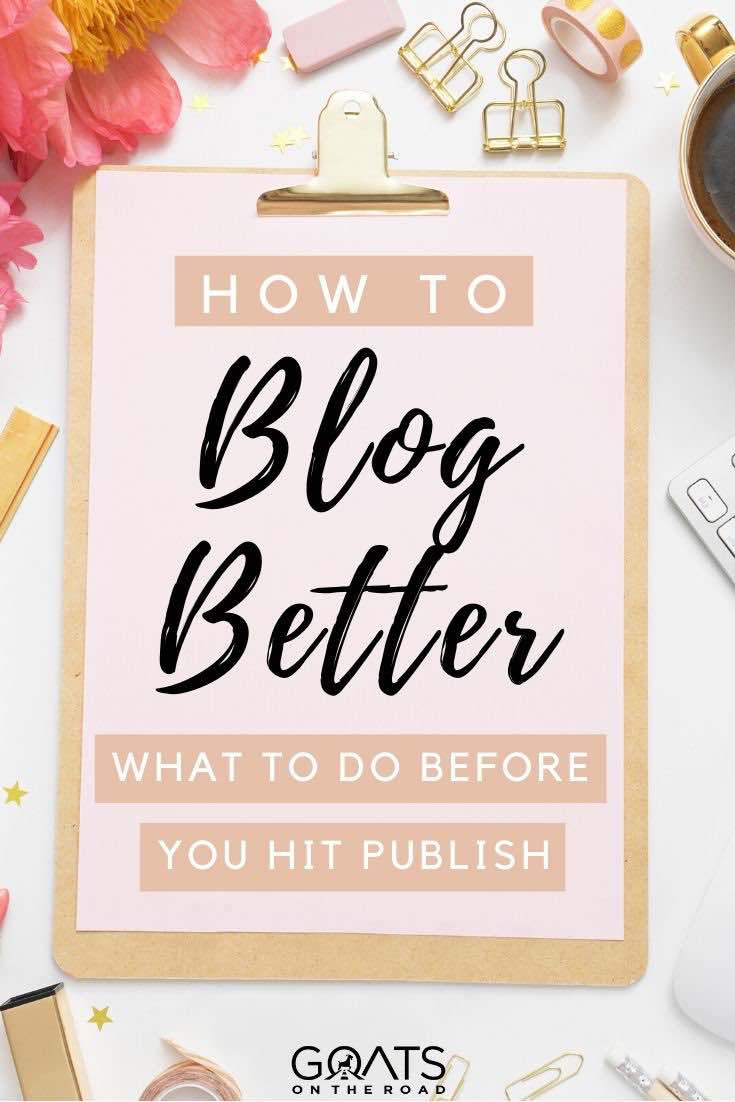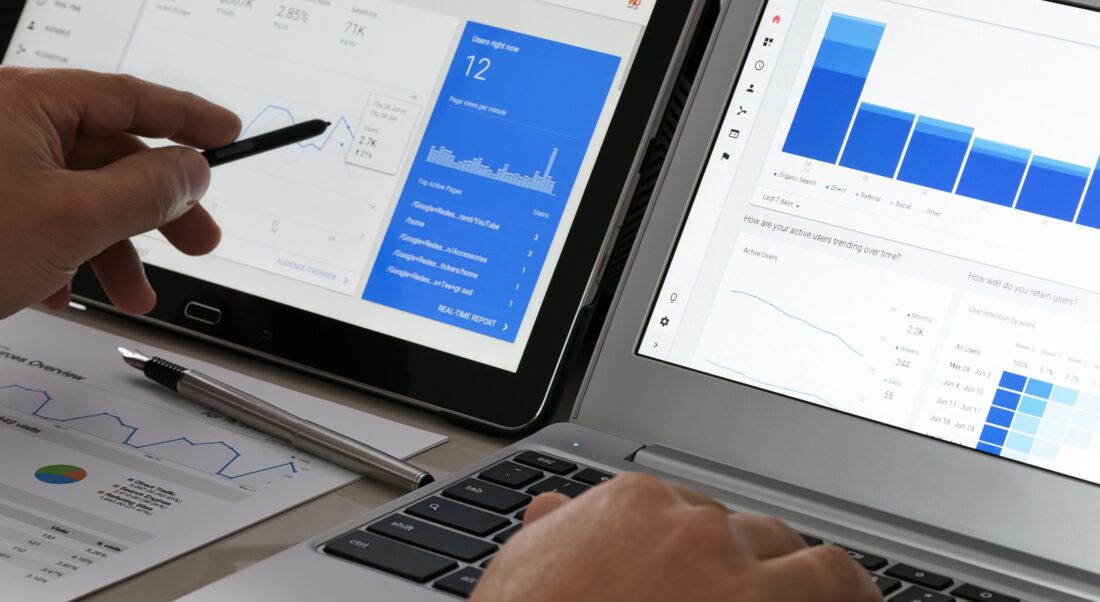Learning how to blog may seem easy at first, but blog writing isn’t as simple as you might think. It’s more than just putting words on a page. You need to think about adding images, page load speed, user experience, grammar and spelling, SEO (will Google like what you write), engagement, formatting and so much more.
In this post, I’m going to teach you how to blog better. I’ll show you my personal blog writing check-list that has helped us write better content, get more traffic and help more people with our website.
Before we get started, it’s important that I explain why you need to have a check-list before hitting the publish button on your latest blog post. Think of the publish button like the launch button on a rocket. You can’t just hit it! You need to go over every part of your blog post to make sure that everything is ready to go before you send it into the universe.
By doing a full systems check before launch, you’ll give your blog post a better chance to be read, shared and to receive traffic from Google.
The first time Google bots crawl your site and find your newest article, they will also be checking it for the same things I’m going to list in this post. The more green lights you get from Google on that first pass, the most likely you are to rank in search results and thus, get more traffic.
Once you’ve written what you think is the perfect article, it’s imperative to go over it a few times to ensure it’s ready to be published. Follow this list of items in my check-list to make sure your article is ready to go.
Note: for a more in-depth article on writing the perfect blog post, including the blog design, how to choose a topic, how to choose a title, and how to write more efficiently, have a look at our ultimate guide to writing a blog post.
Here 5 steps you should take before hitting publish on your article:
✓ 1. Spell Check
After writing your blog post, you should check it for spelling and grammar errors. Incorrect spelling and grammar will not only cause your readers to get annoyed and click away, but it will also harm your potential SEO. Google bots are sticklers for proper language so don’t make the mistake of hitting publish before checking your copy for errors.
There are a few WordPress plugins you can use to check grammar and spelling, but I don’t recommend using them. Why? Having more plugins means your site has more chances of getting hacked, running slower and being incompatible with future updates. Rather than downloading a plugin to your WordPress blog, download the Grammarly browser extension instead (not a sponsor).
Once installed and activated, this extension will automatically underline any errors while you’re writing your blog post. Simply click on the underlined words or phrases and Grammarly will explain why it believes the selected copy to be erroneous and will offer correction suggestions.
💡Productivity Tip: Learning how to blog is one thing, but learning how to blog efficiently is equally important! When you’re writing your blog post and you see that Grammarly is underlining potential errors, don’t fix them right away. Instead, finish writing the entire blog post and then go back and correct any errors. This will ensure that you remain “in the flow” and don’t get too distracted along the way.
✓ 2. Check Formatting
People who read blog posts are not like those who read novels and magazines. When you’re writing a blog post you need to think about how to blog for people who have extremely short attention spans.
The average time spent reading a blog post on most websites is under 2 minutes. That’s because people simply want the fastest answer available. When web users surf the internet, they’re not doing it to gain vast knowledge or to read flowery language, most of the time they’re simply looking for an answer and they want it fast.
To keep your readers’ attention, you need to format your blog so that it’s appealing to the eye. Here are a few tips on how to blog for actual human beings online.
- Break up main points with headings – Headings are also known as H2, H3, and H4 in WordPress. Not only are they good for blog post formatting, but they’re also great for SEO. Google uses these headings to guess what your blog post is about. Make sure you break up your main points with H2 headings, your subheadings with H3 and anything below that with H4. As you can see in this post, the large blue font near the top of the post says “Here 5 steps you should take before hitting publish on your article” is an H2, and each of the subheadings below says “✓…”. These are H3. By breaking up posts like this, it makes them easier to read.
- No paragraphs longer than 4 lines – I may have broken this rule ironically in my last paragraph, but as a rule of thumb your paragraphs should be short. Very short. Forget everything your high school English teacher taught you about paragraph structures. If your paragraph goes over 4 lines on a desktop screen or 7 on a mobile screen, it’s too long. Add a space after one of the periods.
- Break up text with photos – Every blog post should have photos. If you want to know how to blog without boring your readers, then photos are your answer. Simply add a photo after every 3 or 4 paragraphs in your post. More about photos below.
✓ 3. Add Photos
There’s more to adding photos to a blog post than just uploading your best images. First, you need to resize and compress the images so that your blog post will load as fast as possible on your site.
There are three ways to resize and compress photos. You can either do it before you upload using an app on your computer (iResize for Mac, Office for PC), you can use websites like TinyJPG and CompressJPEG to resize images, or you can use a WordPress Plugin like Smushit or Imsanity.
For this, I do recommend using a plugin. We have used Smushit in the past and it works great as a free option. Once installed and activated, you can make it so that every time you upload an image to your blog, Smush will automatically resize it to a smaller file size (I recommend no larger than 1000px across) and it will also compress the file.
You should have a photo after every 4 – 5 paragraphs in your post and you should also be sure to upload a featured image. A featured image will be shown at the top of your post in most WordPress themes.
A few things to think about when adding photos:
- The size of the featured image is decided by your theme. Check your theme settings in WordPress and make sure you upload the featured image in the proper dimensions for your theme.
- All photos in the main content of your post (besides the featured image) should be uploaded no larger than 1,000 pixels wide and hopefully, after compressing them using the tools listed above, each photo is no larger than 500MB.
- Every photo should have an “Alt Text”. To add alt text simply click on the photo in your WordPress Editor, then click the pencil or edit button on the photo. Then you will see a place to write your alt text. Alt text should explain the image and sometimes include the Keyword you’re trying to rank for in SEO.
💡Productivity Tip: While I do recommend using a plugin to compress and resize your images, this may not be the ideal solution if you have a slower wifi connection as you’ll still have to upload the full-size file before the plugin can work its magic. This can take forever! If you have slow internet or are travelling, I recommend using an app on your computer first before uploading it to the blog to save time.
✓ 4. Pick a Category
Once you’ve written your post, it’s time to add it to a category. Every blog post should be under a category, that way your readers can find it in your blog archives and menu when searching around your website. It’s also acceptable to have a single blog post in multiple categories. For example, if you’re writing about budget travel in Africa, then you may put that post in your “Budget Travel” category, as well as your “Africa” category.
✓ 5. Optimize For SEO
SEO is the single most important key to actually growing a successful blog. It’s great to learn how to blog, but if you’re not learning how to blog for SEO, then you’re basically just treading water. By learning proper SEO strategies, you’ll be able to drive traffic to your blog quickly.
I’ll list a few of the most important aspects of learning how to blog for SEO below, but there’s a lot more to SEO than just writing better content and utilizing keywords. SEO is all about building authority links, creating pillar webs on your site and producing content on a schedule that Google will love.
To learn more about proper SEO, check out our Free SEO Training Video. You can also read our recent posts all about our best SEO tips for bloggers.
For now, here are a few of the most important things to keep in mind when learning how to blog and how to write better posts for SEO:
Keyword Research: Before you even write a blog post, you should use a keyword research tool to help you choose a blog topic that people actually search for in Google. If you were to write a blog post called “My Road Trip Around Europe” you might find that people search that term only 10 times per month in Google on average. While if you title your post “Best Road Trip Destinations In Europe” you might find that 2,000 people search it in Google.
Google Keyword Planner is a free keyword research tool but it’s way too limited. To take SEO seriously you’ll want to get a pro tool like KeySearch. Using our affiliate code “GOAT20” you’ll get 20% off, plus you’ll help support this blog.
Keyword In The Title: Now that you’ve found a keyword or key phrase that thousands of people actually search for in Google, it’s time to put it in all of the right places in your blog post. The first is in the title. As in the example above, if your keyword is “Best Road Trip Destinations in Europe” then that should definitely be in your title. It doesn’t have to be the only thing in the title, for example, is your keyword was just “Best Road Trip Destinations” it would still be okay to include “In Europe” at the end, as long as the keyword appears somewhere in the title.
Keyword In The First Sentence: The keyword should always appear in the first sentence of the blog post. This helps Google and your readers understand what the post will be about right away.
Keywords in the Headings: As I talked about earlier in this blog post, using headings (H2, H3, H4 etc.) is important for formatting and for SEO. Your keyword should appear at least once in an H2, H3 and an H4 in your blog post. There is no need to use an H1 in your blog post because WordPress automatically uses an H1 for your blog post title, which as we already covered above, should include your keyword.
Keyword Density: Never overstuff your keyword into your blog post. Google is too smart for that and can actually penalize you for trying to trick the system like that. Instead, place the keywords as many times as you can throughout your post wherever it comes naturally. A keyword density of 0.5-1% is recommended (ie: if your blog post is 1,000 words, then the keyword should appear 5 – 10 times within the copy).
Keywords in the Alt Tags: At least 10% of your images should include your chosen keyword in the Alt Tag. Never add the keyword to all of the alt tags, but adding it into one or two of your photos is great for SEO.
Write a Strong Meta: The meta description is the text that appears in search results under your blog post title. Edit your blog Meta Description and make sure it entices the reader to click on your post while including your focus keyword at least once.
Interlinking: Once your post is published, you should go into all of your other relevant posts on your site and link to the new post. This is a simple step that many bloggers forget, but it can drastically improve your chances of getting traffic to your new posts, both from other posts on your site and from Google.
Backlinking: Good SEO is all about backlinking, but doing it in an ethical, non-spammy way. We teach a lot about backlinking in our SEO Training so don’t miss it. Basically you’ll want to get featured on other people’s websites that link back to your new blog post. This will help you rank in Google and will also drive traffic from other sites.
Update and Improve: No blog post is ever “finished”. Google loves when you go back and update older content. Every couple of months you should go back on your top-performing posts and improve them wherever possible. Add more useful content. Add maps, prices, whatever you can to make sure that the post is as good as it can be, add text that says something like “Updated August 2020”.
💡Productivity Tip: Utilize The Yoast SEO Plugin. While the Yoast SEO Plugin for WordPress shouldn’t be your only reference for good SEO blog writing, it is a good place to start. This coupled with the tips I teach in our Free SEO Training Video can really help you drive traffic to your site. After writing your blog post, make sure that all of the green lights are showing up in Yoast. Yoast will automatically check for the things I listed above, it will allow you to edit your meta description plus give you some extra data to use for SEO.
Now You Know How To Blog Better
By making sure that you tick all of the boxes in this post, not only will you be able to write better content to serve your audience, but you’ll be able to get more traffic and grow your readership as well. Writing great content, properly formatting it and optimizing for SEO are the three pillars of any successful blog.
Did I miss anything? Please comment below and tell me about your blog writing check-list.
Like This Article? Pin it!














